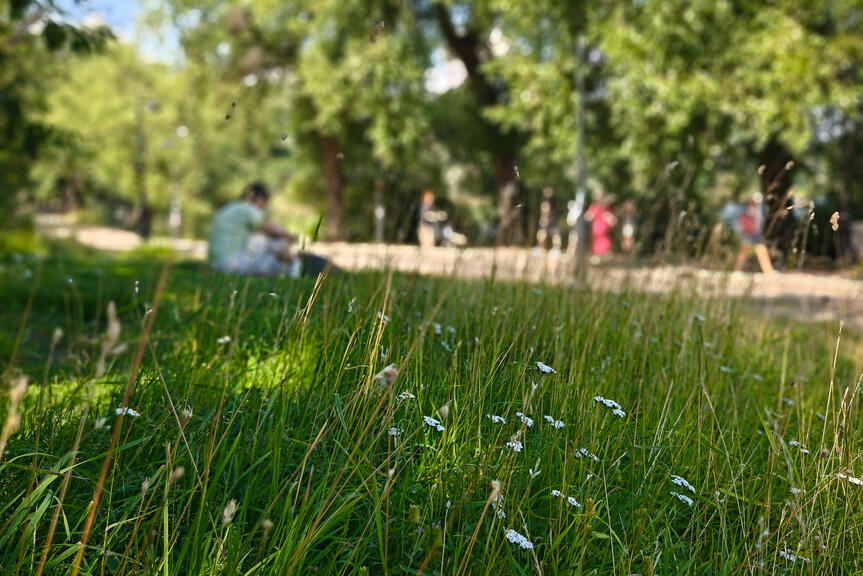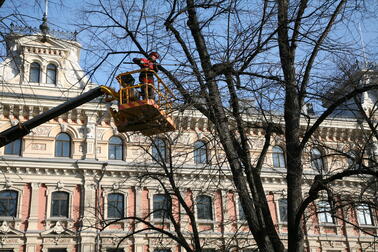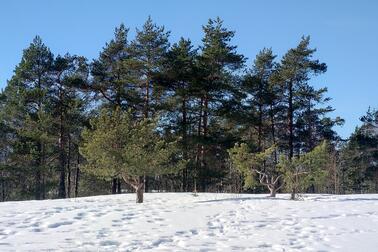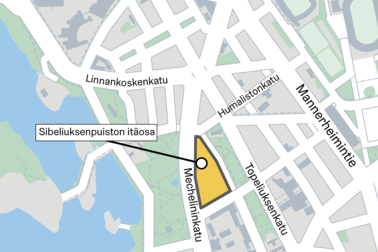
More and more of the lawns in Helsinki’s park and street areas are left to grow more naturally than before during the summer. The reason for this is the City’s aim to strengthen biodiversity.
“The City occasionally receives feedback from park users who suspect that a lawn area has been neglected because the grass, kept short in the past, is suddenly longer than people are used to. However, what is often going on is that a site such as a clover area has been left to grow for the duration of the blooming period,” says Green Space Maintenance Team Manager Anna-Mari Tiitinen-Kairi from the City of Helsinki.
This year, the objective of park and street maintenance is to improve biodiversity in an area of at least five hectares. Many sites now have both low-cut and more natural lawn areas. Examples of such sites include Linnanpellonpuisto Park in Vesala, Meilahti Arboretum, Paukkulanpuisto Park in Kivikko and Liinamaanpuisto Park in Keski-Vuosaari.
Tree surroundings, steep slopes and narrow grass strips are typical places where the lawn area can be left to grow and flower for longer. The aim is to select these sites tactically in collaboration with contractors.
“Not all residents like longer grass and, of course, the city also needs lawns for picnics and yard games. The location and purpose of an area have a major influence on whether the lawn can be left to grow longer,” says Tiitinen-Kairi.
Most of the lawns in street and park areas will be cut as usual, but even in these places, the weather can affect the timing of the work. During hot weather, the lawn can be left long to prevent it from drying out and yellowing.
Lawn areas are also being converted into meadows
In different parts of Helsinki, some lawn areas are left to grow and develop into meadow environments, providing a habitat for meadow-dependent insects. The development of meadows supports urban biodiversity and contributes to preventing biodiversity loss.
Last year, a total of 7.5 hectares of lawn areas were converted into meadows in public areas in Helsinki. The largest unified area was in the Arabia and Toukola shore park. Examples of this year’s new sites include Kauniinilmanpuisto Park and Porslahti Park, both located in Vuosaari.
“Meadow nature has been developed both on the City’s own initiative and in response to the wishes of residents. People sometimes think that meadows are made to save money. However, this is a misconception,” says Anna-Mari Tiitinen-Kairi.
“Particularly in the early stages, developing a meadow requires a lot of work, especially if the goal is to create a flowering meadow. It can also take a surprising amount of time to eradicate invasive alien species from meadows. Furthermore, the meadows must be mown at least once a year to prevent afforestation.”
Biodiversity is supported by favouring diverse food plants suitable for pollinators, including in plantings. This has been reflected in the selection of perennial plant species and seasonal plantings for years. Some plants attract butterflies, while others attract bumblebees and some attract hoverflies. Simple flowers usually produce pollen and nectar, which pollinators need.


